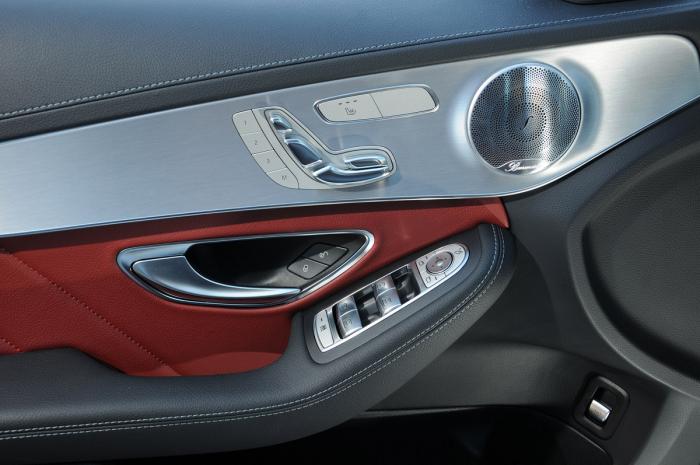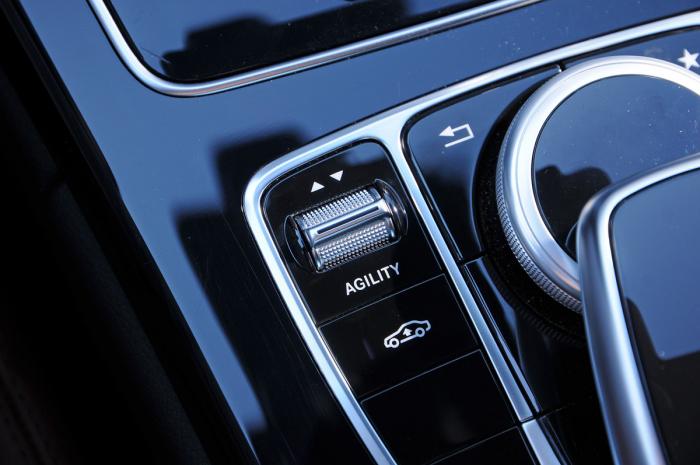The all-new Mercedes C-Class graced the testing facilities at AutoExpress recently and they went over it with a fine tooth comb. Reviewing the Mercedes-Benz C-Class for styling, driving, reliability, running cost and practicality.
Mercedes has added lots more equipment to lure in new buyers, so spec-for-spec, the new model is actually better value than before. This is especially true when you consider that Mercedes claims improvements to the engines mean it’s also up to 20 per cent more fuel-efficient.
Three engines are available at launch – two diesels and one petrol, with a further diesel and a diesel-electric hybrid joining the range in September 2014. An estate version, and a high-performance AMG model, will also be on sale before the end of 2014, while a petrol-electric plug-in hybrid, the option of 4MATIC four-wheel drive and a sleek C-Class coupe will arrive at a later date alongside a convertible.

Mercedes-Benz C-Class
The AutoExpress choice: Mercedes C220 BlueTEC Sport
Styling – 4 stars
The C-Class is Mercedes’ most important model – one in every five new Mercs sold worldwide is a C-Class. So that means the designers can’t be too controversial with the exterior looks. At the front, all cars sold in the UK get an SL-style two-bar grille flanked by curvy lights that look similar to those fitted to the larger S-Class. You can opt for LED headlights like the S-Class’s too.
The car’s side features muscular creases, while the rear features quite a short bootlid and LED tail-lights. SE cars get 16-inch alloys as standard, Sport models get more chrome trim, 17-inch alloys and 15mm-lower suspension, while AMG Line cars look the best thanks to their 18-inch alloys and curvier bumpers. The C-Class isn’t exactly striking, but it’s a handsome enough car, and looks less macho and aggressive than a 3 Series.
Inside, Mercedes has taken a bigger step, with a much higher-quality, better-designed cabin than the outgoing model. All cars get a seven-inch central TFT screen – upgradable to an 8.4-inch TFT screen if you spec the COMAND Online system. This displays all of the car’s infotainment functions and is controlled by a new touchpad that’s easy and intuitive to use. Also included is a well-designed multi-function steering wheel.
All cars have Artico artifical leather upholstery as standard, Sport models get Garmin sat-nav included, and top-spec AMG Line cars have more leather trim on the dash, aluminum trim on the doors and an interior lighting package. Options include a head-up display, 360-degree-view camera to aid parking and a glovebox-mounted fragrance dispenser.

Mercedes-Benz C-Class
Driving – 4 stars
The new C-Class is the first car to be built using Mercedes’ new rear-wheel drive architecture (MRA). This uses around 50 per cent aluminium in its construction – up from 10 per cent before – and cuts 70kg from the body. Other weight savings mean the new C-Class weighs around 100kg less than previously, which all helps improve the driving experience.
The C-Class does feel much more agile than before, thanks to the weight loss and to the fact that the car now features torque vectoring rear brakes. All cars get Agility Select, which allows the driver to choose between Comfort, Eco, Sport and Sport+ and Individual modes – the latter letting the driver mix and match their preferred settings from the other pre-defined modes.
All C-Class models come with a newly designed comfort suspension as standard, lowered by 15mm on Sport and AMG Line cars. However, for the first time in the segment, adaptive air suspension is a £895 option. The air springs don’t do a great deal for dynamics – unless you stick them in their firmest setting – but the extra comfort they give on a long cruise is exceptional.
The steering is accurate and direct, although a little extra response just off the straight-ahead would be welcome. However, that might be different in cars with standard steel springs.
So far, we’ve only sampled the C250 BlueTec diesel, which provides plenty of power and competitive claimed fuel economy figures. However, it’s carried over from the previous car and remains pretty gruff and noisy. The engine is marginally quieter than the previous model, but the higher quality interior, smooth ride and near-total lack of wind noise only serves to add to the impression that the engine should be better.
Likewise, the 7G-Tronic automatic gearbox is carried over, and while it’s very smooth in comfort mode, and makes quick manual shifts, it doesn’t seem to ever be in quite the right gear in Sport mode – a problem that the eight-speed auto in the BMW doesn’t have.

Mercedes-Benz C-Class
Reliability – 4.5 stars
Standard safety equipment on all C-Class models includes Attention Assist, Collision Prevention Assist Plus, automatic lights, cruise control, a tyre pressure monitoring system and a reversing camera. Much of this tech already exists in other Mercedes models, so it’s all proven and should be reliable. Likewise, a number of engines and the auto gearbox are also carried over.
Further safety equipment can be added on Sport and AMG Line models fitted with auto gearboxes only. The Driving Assistance pack costs £1,495 and includes adaptive cruise control, blind spot warning and lane keeping assist.
The new C-Class hasn’t been tested by Euro NCAP yet, but the previous car gained a five-star rating in 2009.

Mercedes-Benz C-Class
Practicality – 4.5 stars
At 4,686mm long and 1,810mm wide, the new C-Class is 95mm longer and 40mm wider than before. Couple this to an 80mm increase in wheelbase, which now measures 2,840mm, and the C-Class certainly has the potential to offer more cabin space.
And that’s true in part. Up front, there’s lots of room in the comfortable seats, with plenty head and legroom. The driving position is better aligned now, too, and visibility is good. There’s plenty of space in the doors and dash to store the usual on-board clutter, with all models including a media interface for connecting your smartphone to the car.

Mercedes-Benz C-Class
Running Costs – 4 stars
At launch, there are two diesel and one petrol engine options to choose from. The C220 Bluetec 168bhp 2.1-litre diesel is expected to be the best seller. In entry-level manual SE form, it emits 103g/km and returns over 70mpg, meaning it sits in the 16 per cent BiK bracket – great for company car drivers.
The C250 Bluetec model is much cleaner than before, and claims the same CO2 figure, but 65mpg. The only petrol model is the C200, powered by a 181bhp 2.0-litre engine that returns 53.3mpg and emits 123g/km of CO2, whether you choose manual or auto gearboxes. All engine and gearbox combinations are more competitive in terms of running costs than before, with some up to 20 per cent more efficient.
The engine range will soon expand to include the C200 Bluetec, which is powered by a new 1.6-litre diesel that comes in 114bhp or 135bhp versions. A C300 Bluetec diesel-electric hybrid will also be offered, which develops 230bhp yet returns 72.4mpg. A plug-in petrol-electric hybrid will also be offered.
Via: AutoExpress





